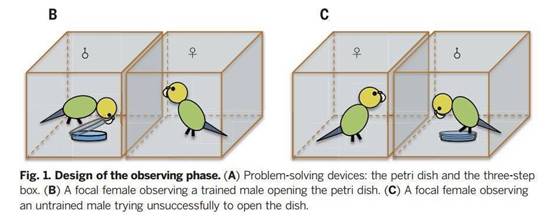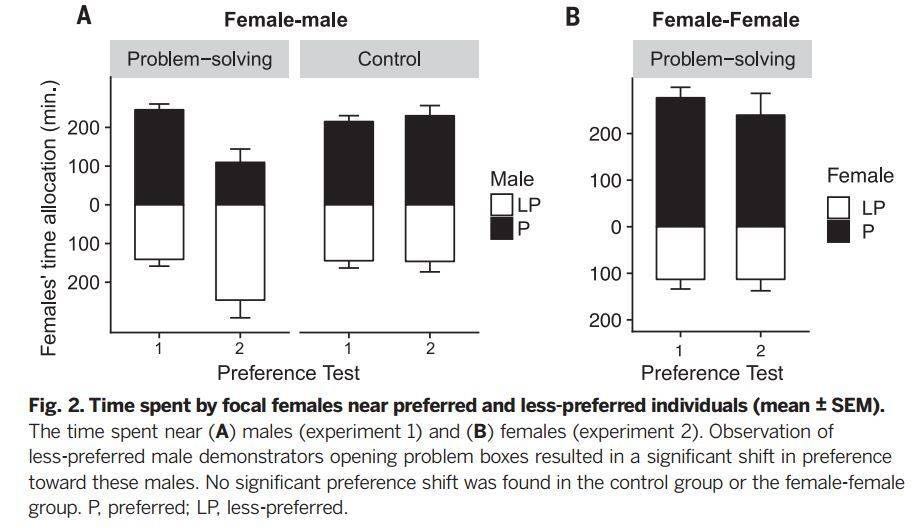Mating strategy study explored in top science journal

Direct observations of problem-solving skills increase male attractiveness among female Australian budgerigars, also known as budgies, or parakeets, according to the latest study published in top journal Science Online.
The study on the female budgerigars’ preference of mate selection was conducted by Sun Yuehua and Chen Jiani, researchers from the Chinese Academy of Sciences, with others from Leiden University.
The study of "mate strategy," as Sun suggested, was inspired by Darwin's hypothesis that individuals with higher cognitive levels are prone to mate in male competitions among human beings. And mate choice contributes to the evolution of human cognition.
Notably, that turned out to be true for Australian budgerigars as well, according to the study. Scientists expect such research would help improve cognitive ability and the chance to land a mate.
The research results were published in the academic journal Science Online on Friday, with the title of Problem-solving Males Become More Attractive to Female Budgerigars.
The Australian budgerigar is a bird that feeds on plant seeds. The females need to rely on mates for food during hatching and brooding. Therefore, finding a savvy and capable male is of great significance.

The researchers chose the budgerigar as the experimental object. They first let a female choose between two males and pick the preferred one. Then the initially less-preferred bird was trained in foraging skills.
The training included learning how to open a petri dish and a three-step box. A male bird can learn how to do this in a week with researchers’ help.

After the training was completed, the previous female was allowed to observe the trained males opening the food box to obtain food, and the initially preferred males attempting the feat. It turned out that initially less-preferred males became preferred after the female observed these males, but not the initially preferred ones.

To rule out the effects of food and gender, two controlled experiments were conducted. One let a female observe the initially less-preferred male foraging in the open box and the initially more-preferred one with an empty box. The other let a female choose a preferred female through the same procedure as the first experiment.
No significant preference shift was found in the control group, which enhances the reliability of the experiment.

Meng Die contributed to the story
- Deeper reflections on 'cave-dwelling conversation'
- Fudan University sets AI education guidelines
- Haier ranks first in global sales for 17th consecutive year
- Norway's seafood exports hit record in 2025, China emerges as top three market
- Crucial tower of Shenzhen-Jiangmen Railway completed, marking significant milestone
- Hangzhou selected as a 'Zero-Waste Cities' by the UN




































